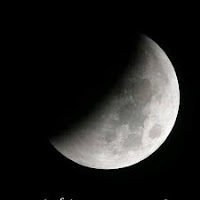Lunar eclipse coincides with winter solstice after 372 years!
After a wait of 372 years, sky gazers are in for a special celestial treat as winter solstice coincides with total lunar eclipse on the Tuesday.
The last time the 2 astronomical events coincided was on December 21, 1638, Geoff Chester of U.S. Naval Observatory said.
The eclipse cannot be seen in India as it will occur during day time but astro-lovers can see the full moon turning into a delightful shade of coppery-red from Europe, west Africa, the Americas, the Pacific Ocean, eastern Australia, the Philippines and eastern and northern Asia.
Also, Tuesday (December 21) is the shortest day of the year as people living on the northern side of the equator will celebrate winter solstice.
“It is a day when the Earth’s axis tilts the farthest from the sun and is called winter solstice, a term derived from Latin words ‘sol’ (sun) and ‘sistere’ (to stand still),” Science Popularisation Association of Communicators and Educators (SPACE) president C.B. Devgun said.
A solstice is an astronomical event which happens twice each year, when the tilt of the Earth’s axis is most inclined toward or away from the sun, causing the sun’s apparent position in the sky to reach its northernmost or southernmost extreme, he said.
On the day of winter solstice, North Pole points directly away from the sun and South Pole points directly towards the Sun, he said, adding the sun shines at lowest heights in northern skies and at maximum heights in southern skies.
This results in the shortest day in the Northern Hemisphere, but at the same time it is the longest day in Southern Hemisphere.
The winter solstice will be at 5.08 a.m. on December 22.
In Delhi, sunrise will be at 7.09 a.m. and sunset at 5.29 p.m. making it a day with about 10 hours duration, Devgun said.
The total lunar eclipse will occur at 13:47 p.m. on Tuesday, Prof R.C. Kapoor of Indian Institute of Astrophysics told PTI.
The countries from where the eclipse can be seen are favourably placed with an overhead view as the eclipse unfolds between 02:41 AM and 03:53 AM local time, he said.
The eclipse will begin at 10.58 AM IST passing through various phases and will end at 4.36 PM IST, N Raghunandan of Planetary Society of India said. Earlier, on June 26, a partial lunar eclipse was witnessed. The next lunar eclipse will be seen on June 15, 2011, which will be total, and visible from India, he said.
The next time the 2 events will coincide will be on December 21, 2094, Devgun told PTI.
A ‘Khagol Mela’ on winter solstice has been planned by SPACE in collaboration with Nehru Planetarium at Jantar Mantar here. Students from various schools would be performing activities like measuring the sun’s angle during noon and finding declination of the sun.


0 comments